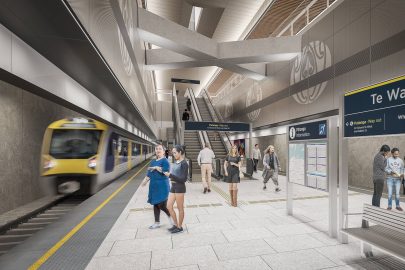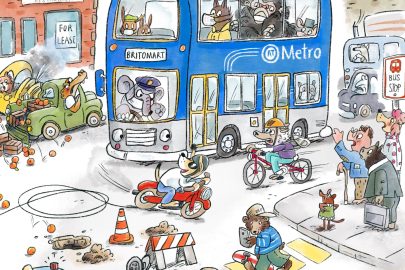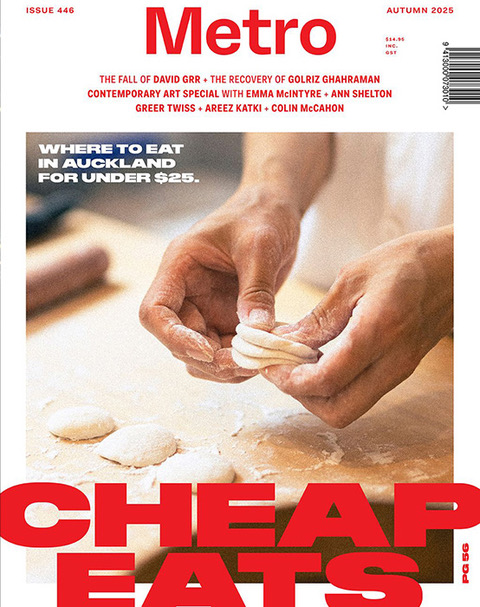Jul 28, 2016 Transport
For 18 months, Explore Group took on Fullers, the entrenched ferry operator on the lucrative run to Waiheke. But, like others before it, Explore was defeated. Metro probes a spectacular market failure.
Words by Greg Treadwell, photos by Ken Downie. This article was first published in the June 2016 issue of Metro.
At downtown Auckland’s Pier 3, under the towering PWC building, two Waiheke women are queuing to board the oddly named D5 for its 2.30pm sailing to Matiatia Wharf. In no time, they’re talking about ferries, of course. The good folk of the Hauraki Gulf’s most populated island live and breathe ferries and discuss boats, wharves and timetables endlessly. Ferries are that important to us. Today, there is real anger in the voices behind me. They’re Explore fanatics.
“Oh my god. I just can’t believe it. What can be done? Nothing can be done. What can we do?” says one.
“It’s such a tragedy,” says the other. “Is there nothing we can do?”
Thirty metres away at Pier 2, not due to depart for 35 minutes and bobbing quietly on her ropes, is Superflyte, Fullers’ 41m high-speed behemoth, capable of carrying 650 people. Compared to Explore’s smaller, bright-yellow and unimaginatively named D5, D6 and D7, Superflyte looks a little menacing, almost shark-like. It seems symbolic of everything the two women are mad about: power, size and a brutal sense of entitlement that Fullers, for so long the only ferry firm servicing Waiheke, is regularly accused of displaying. My neighbours seem reluctant to even look over at Pier 2 because that would be to acknowledge “that other lot”. Believe me, they’re that angry. The news had hit the island grapevine the day before: after 18 months of having an alternative to the monolithic incumbent, Fullers, it’s all over. After raising the hopes of thousands, Explore is pulling out.
Read more: The floating tribe: Life as a Waiheke commuter
The boats that have serviced Waiheke, an increasingly valuable jewel in the city’s tourism crown and a playground in the gulf for untold numbers of Aucklanders, now have a new chapter in their colourful history: The Death of Explore. Many islanders, starved of competition on the route for generations and often openly resentful at what they see as Fullers’ monopolistic indifferences, have gone into mourning. There is anger, sadness and, yes, even a kind of grief. I told you ferries were important.
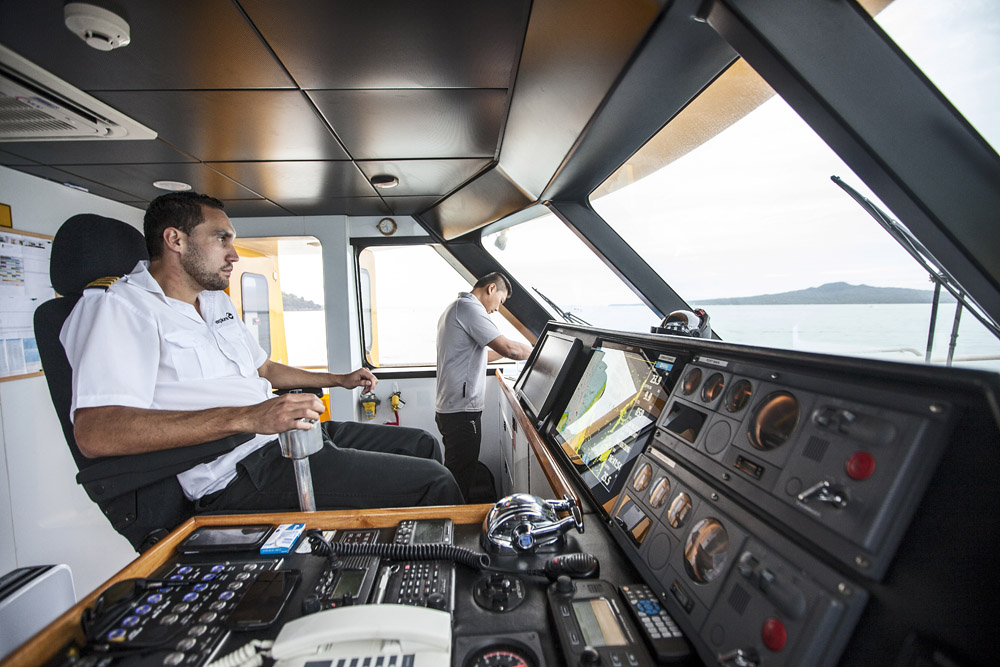
For citysiders, other Kiwis and the ever-growing flood of tourists and travellers heading to Waiheke, Explore’s surrender also means no choice of ferry and so no competition holding down prices and raising service levels. Everyone suffers: mainlanders heading to the island to chill for the day; weekenders and bach owners, who swell the ranks queuing on Pier 2 on Friday afternoons; tourists wandering around still logged into Google Maps and bumping into things. Given Waiheke’s skyrocketing value to the city as a visitor destination, and New Zealand’s adopted belief that markets can optimise the efficiencies of even essential services, it’s a disaster.

“It’s the same situation that happened after Pacific Ferries folded in 2001,” says Hans Versluys, a long-time Waiheke resident, commuter and transport blogger. “Fifteen years later, we’re back at that point, where there’s one provider with no oversight, no accountability, no regulation on fares, service levels or use of vessels. It’s all in Fullers’ hands. We are at their mercy again.”
Versluys’ Fullerswatch blog has campaigned for years for fairer pricing, properly integrated ticketing and an end to Fullers’ government-supported monopoly on the Waiheke run. It’s effectively a supported monopoly because the ferry company successfully lobbied the National government in 2011 for the Waiheke route to be exempt from its public transport initiative, the Public Transport Operating Model (PTOM), a regional approach to supplying transport through competitive tendering.
Fullers’ political success meant there would be no tendering for the right to work the ferry route, and no subsidy from the public purse possible to hold fares down. It would remain an entirely commercial route, a free market in name but with only one player realistically capable of being in the game.
“Fares are bound to rise,” says Versluys. “A monopoly is the worst possible situation.”
Mike Lee, city councillor for the Waitemata and Gulf ward, chair of Auckland Council’s infrastructure committee and an Auckland Transport board member, says the compromise Fullers won from Transport Minister Steven Joyce simply bolstered the company’s position as the “owners of a lucrative monopoly”.
Now, with Explore gone, Fullers’ fares are bound to rise, says Versluys. “There’re bets going on about what date [it will happen]. Prices are going to go up. There’s no doubt about that.
“A monopoly is the worst possible situation. It’s complete market failure.”
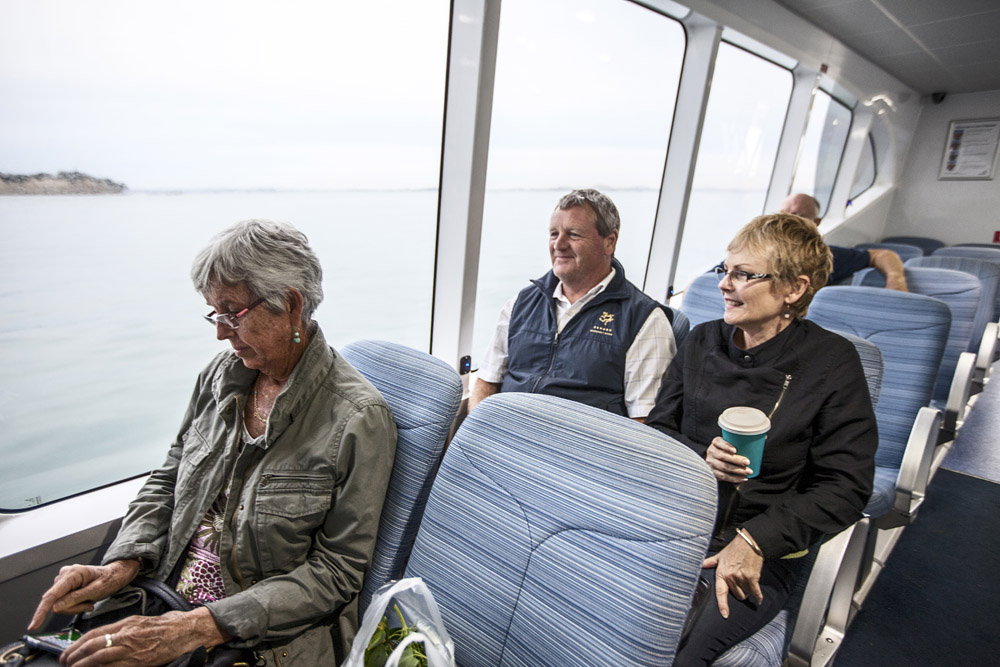
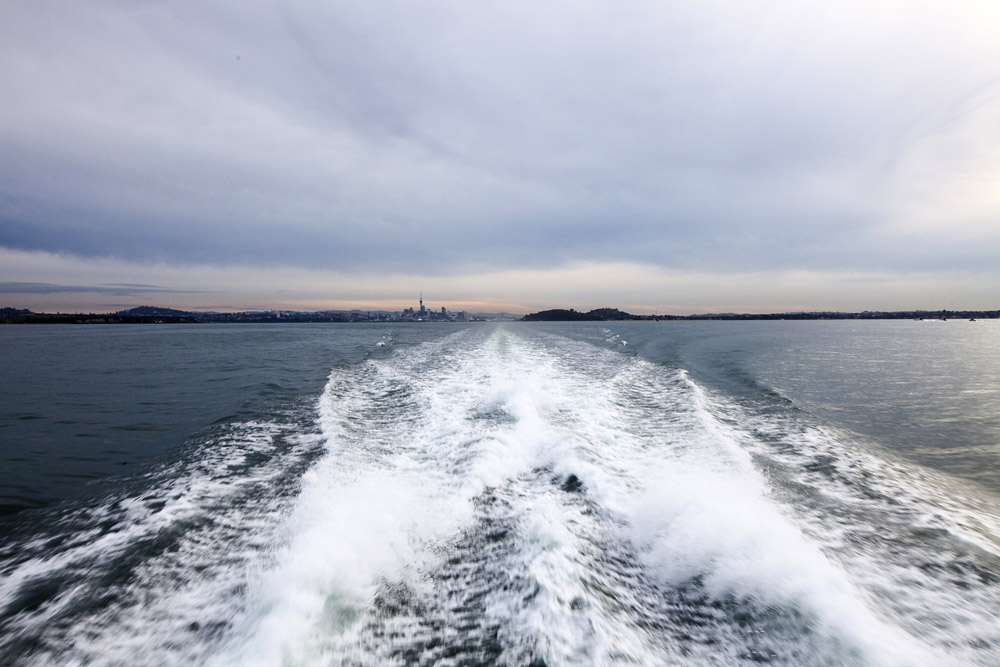
Islanders have long depended on Fullers — for customers for their businesses, transport to the city, buses for shopping and school, for employment, sports sponsorship and, maybe, even their very existence. At least sometimes it feels that way. The boat is a moving community hall, where we have laughed, cried, gossiped, fallen in love, broken up, sung badly, fallen ill, had babies (true) and returned both victorious and defeated from all-important sports fixtures. And Fullers, despite its failings as islanders may perceive them, has been part of all that since Waiheke entrepreneur George Hudson, the father of today’s chief executive, bought Leo Dromgoole’s Waiheke Shipping Company and its charming but ageing fleet of wooden vessels — think Kestrel, Baroona and Iris Moana — in 1981.
Since 1987, Fullers’ fast ferries have threaded the Motuihe Channel countless times, carrying millions of people every year in flat seas or rough. (Let’s be clear — there are crew on Fullers’ boats and at its wharf facilities who welcome you with open hearts and faces every time you board, and sometimes it simply makes your day. Some will go to the ends of the earth for you.)
After periods in the Stagecoach and Infratil stables, the company is now owned by Sir Brian Souter, a controversial Scottish transport magnate. Souter, whose reputation extends to ruthlessly squeezing out competitors, has other New Zealand interests: ManaBus, which competed against and then gobbled up Naked Bus, and Howick & Eastern Buses. His reputation includes a reluctance to pour money back into even his lucrative assets, and Fullers, said one source interviewed for this story, had clear “traces of his DNA” in its operation.
Not many would say the ferry trip to Waiheke is cheap but clearly there are plenty who think it is worth it. Visitor numbers are still climbing steadily and have been boosted by increasing international media coverage of the island, including a recent ranking by Lonely Planet as the world’s fifth-best destination.
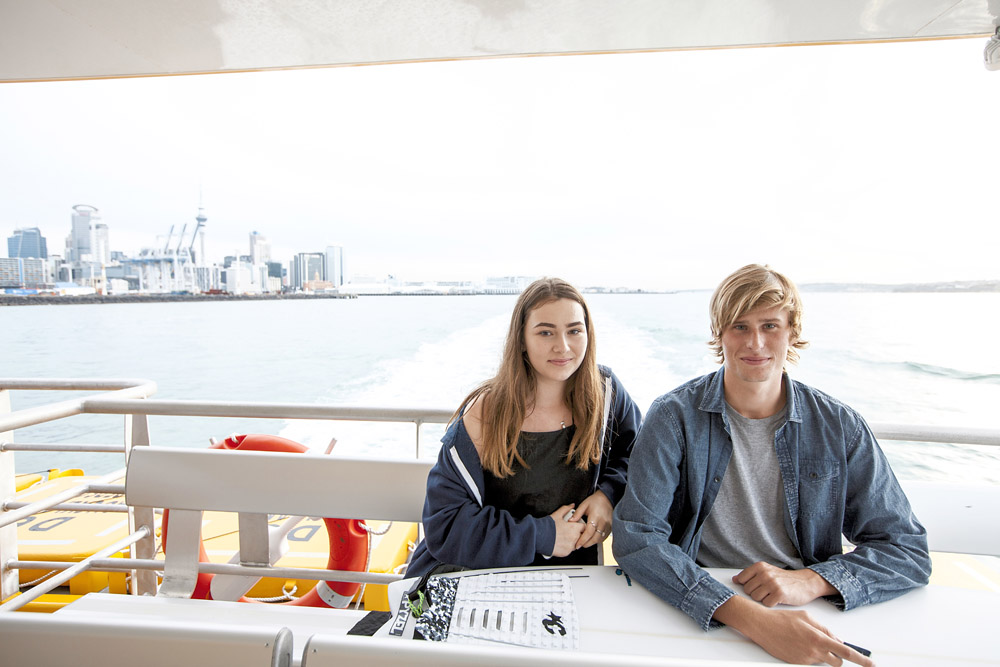 605 " height="403" />
605 " height="403" />
Enter Explore and its sunshine-coloured boats, looking for all the world like slightly awkward rubber ducks but carrying crews who quickly earn a reputation for excellent service. The cost of a single return trip is much the same — $36 or so — but it offers commuters different ticketing options and pulls in those who travel to town for three days or fewer each week. A mix of locals and tourists starts to appear on Pier 3 when Explore is ready to depart every hour, and each day that queue grows a little. Islanders begin to experience a joyous freedom from monopolistic conditions. They talk about it endlessly. Is this the moment Fullers, long privileged with ratepayer-funded wharf facilities, will learn it really does have to share?
Months roll by and with them the problems come and, well, don’t go. Explore’s boats are restricted to the narrow finger pier at Pier 3, with no shelter for passengers and difficult boarding. Fullers’ larger boats retain their bespoke berths at Pier 1 and Pier 2, where it has paid for the ramps, where there is shelter as well as toilets and cafes, and where it has generous central retail spaces provided by the Auckland ratepayer.
The buses on Waiheke are perhaps the most gnarly issue — Fullers owns the Waiheke Bus Company and, after negotiating subsidies with AT, agrees to meet a certain number of Explore ferries. What results, though, is a minimal service with limited reach, without express-route options for commuters, and for many Explore sailings, no bus at all. It becomes obvious many travellers who need to get a bus to and from the wharf on Waiheke are sticking with Fullers.
Then comes the coup de grâce from Fullers. Or at least that’s how the island sees it. With little warning, and citing passenger demand, it suddenly doubles its sailings. After decades of leaving on the hour outside peak times, Fullers is now running a boat every 30 minutes or so during the day, leaving within minutes of pretty much every Explore departure. In response, Explore tweaks its own timetable. A kind of ferry chaos ensues — the Motuihe Channel becomes a motorway of sorts. Never far behind one boat is another. There is scarcely time for the birds at Matiatia to settle again before the next arrival. Knowing which bus meets which boat and when it goes becomes virtually impossible. The later it is in the day, the further behind its new schedule Fullers is running, and early-evening commuter boats are regularly late. Everything is mayhem.
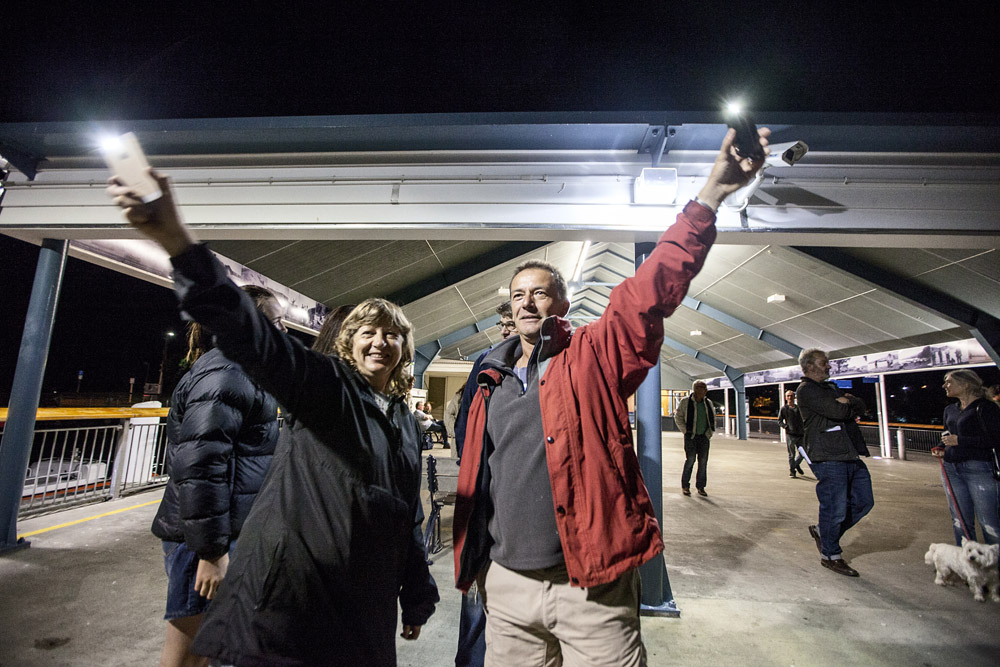
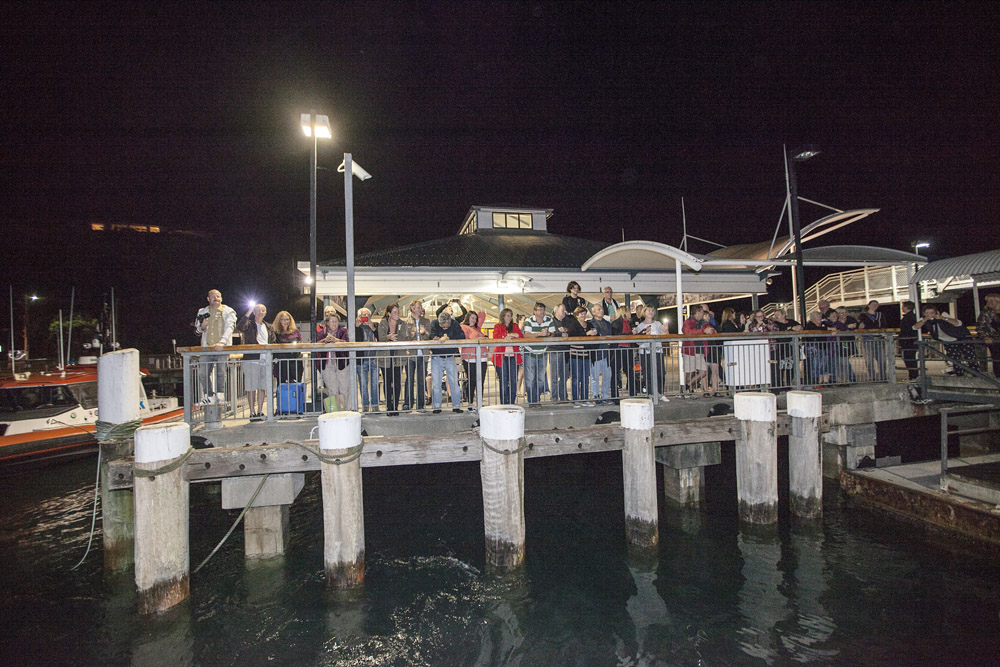
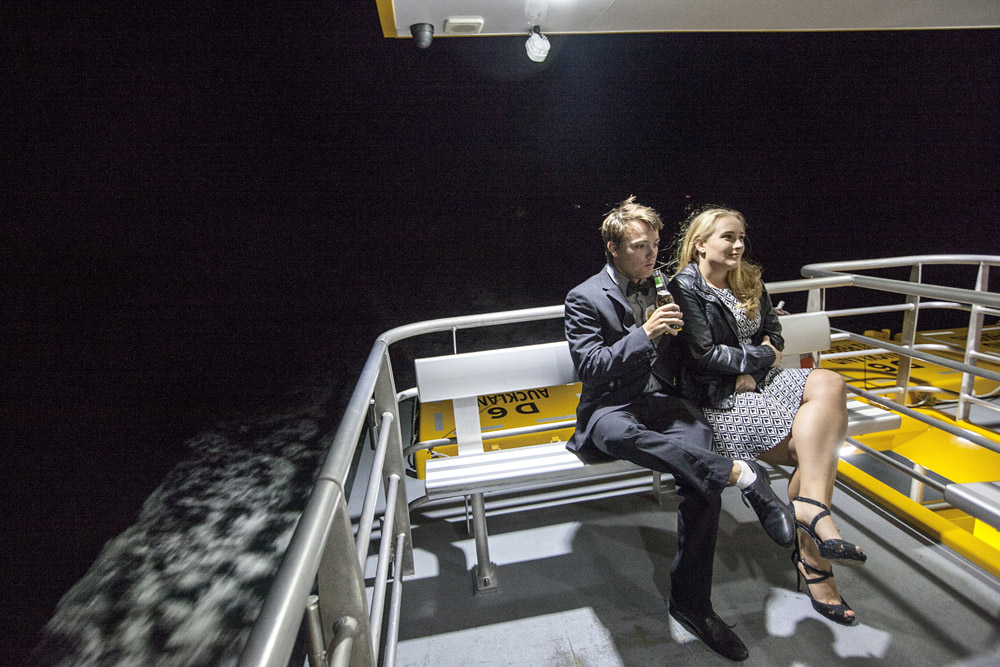
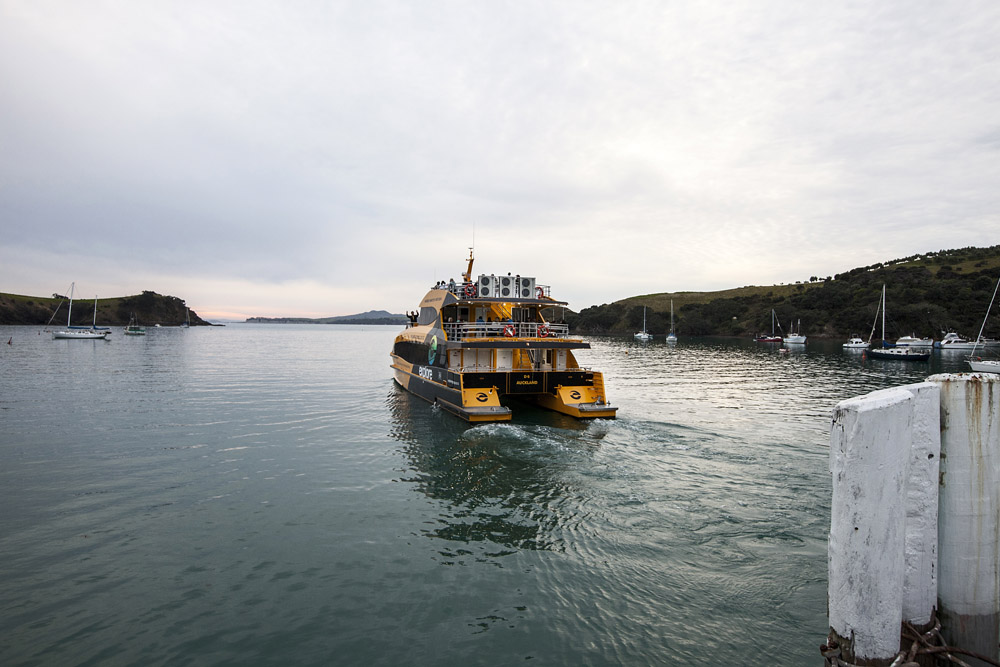
Above: Scenes aboard the explore service on its final day and at Matiatia wharf as the last sailing is farewelled.
But it works. By the time summer is over and Fullers returns to what it now calls its “winter timetable”, the damage is done. It’s been ugly but Explore has been starved of enough business. The end for the newcomer probably begins about now.
Mike Lee says Explore initially filled the gaps in the Fullers service nicely, giving passengers real choice, but Fullers’ tactics in response meant “a lot of confusion and misalignment with bus services”.
“If the directors of Explore had held a similar advantage, I am sure they would have responded in a similar way.”
“One can’t help but feel that Fullers’ timetable changes were motivated just to crowd out Explore. Let’s be honest, though. If the directors of Explore had held a similar advantage, I am sure they would have responded in a similar way to a competitive threat. It’s called capitalism.”
Versluys lists the problems Explore faced: inequitable wharf facilities, an inadequate bus service for its customers arriving at Matiatia, and the 14 months before it could be included in the SuperGold Card scheme for over-65s. (A government review of the scheme had temporarily locked the door to new operators.) And on top of that, there was the loss of the centrally located and highly visible 2B berth at Pier 2, under repair, out of action, and so unavailable for Explore, whose pier was outside the main terminal area. Meanwhile, Fullers, whose customers over at Pier 2 have shelter, seats and a dedicated waiting area, continued to look as if it was the obvious, maybe the only, way to get to the island.
For all these things, Auckland Transport has been the subject of a good old-fashioned tongue-lashing from Waiheke residents, who have generally mistrusted mainland politicians and bureaucrats since the 1989 local government amalgamations put Waiheke under the Auckland City Council’s control. Having different needs from any other Auckland community and wanting more self-determination, they have endured indifferent administration from the mainland for decades. It’s no surprise they turn on AT when Explore pulls the plug.
But Lee, often a harsh critic of the council-controlled organisation, isn’t convinced Explore’s problems were AT’s fault. A veteran Hauraki Gulf politician and the former chair of the Auckland Regional Council, he’s clear there was no conspiracy between AT and Fullers. In fact, he thinks Explore may have jumped the gun. Should it not have got its “ducks in a row” before announcing rather suddenly that it was in the game? Perhaps it should have ensured both the SuperGold Card scheme and a regular bus service were in place before it launched its boats.
Despite his roles at both Auckland Council and AT, Lee says he has never heard from Explore about anything. No word they intended to join the run, no complaints while they were on it, no word they were about to bail. “I assumed the directors and managers were confident they had everything under control,” he says.
In an email to AT directors, the general manager of the council-controlled organisation’s metropolitan operations, Mark Lambert, said a level field had in fact been created for Explore — within the constraints of both legacy contracts that gave Fullers priority access to Piers 1 and 2 until the middle of last year and the Government’s rules about access, that is.
A lack of “capacity” at Pier 2 was an issue, he acknowledged. But Explore had given less than two months’ notice of its intention to take on Fullers on the high seas and Pier 3 had been the only berth that would be consistently available for it. He points out numerous ways AT supported Explore, including funding buses to meet some of its boats. AT Hop systems were to be installed this month and AT had, among other things, lobbied for the inclusion of Explore in the SuperGold Card scheme.
“The angle of the playing field was not the decisive factor in my view,” says Lee. “It was Explore launching before they were ready and Fullers using their incumbent position to drive off a competitor.
“That said, Explore’s arrival was a breath of fresh air and it did provide a first-class ferry service. Like a lot of Waiheke people, I have a great deal of sympathy for the plucky underdog in this battle, but most people would also concede that Fullers and its hard-working crews do run an efficient, reliable and safe service that has stood the test of time.”
Lee is realistic about how hard it is to budge Fullers from its perch, though. “Given Fullers have been operating for over 30 years and moreover is the linear descendant of the Waiheke Shipping Company and [it’s been a] monopoly for the best part of 100 years, it definitely has an incumbent’s advantage.”
Matt Lowrie, a commentator at transportblog.co.nz, thinks AT was, in fact, keen on the competition Explore was offering. After all, it was likely to negotiate a better price for the SuperGold Card remuneration if there were two operators. But “institutional inertia” hadn’t helped and AT could have pushed things along faster, he thinks.
There is simply very little oversight of the Waiheke run from AT, or anyone else for that matter, he says.
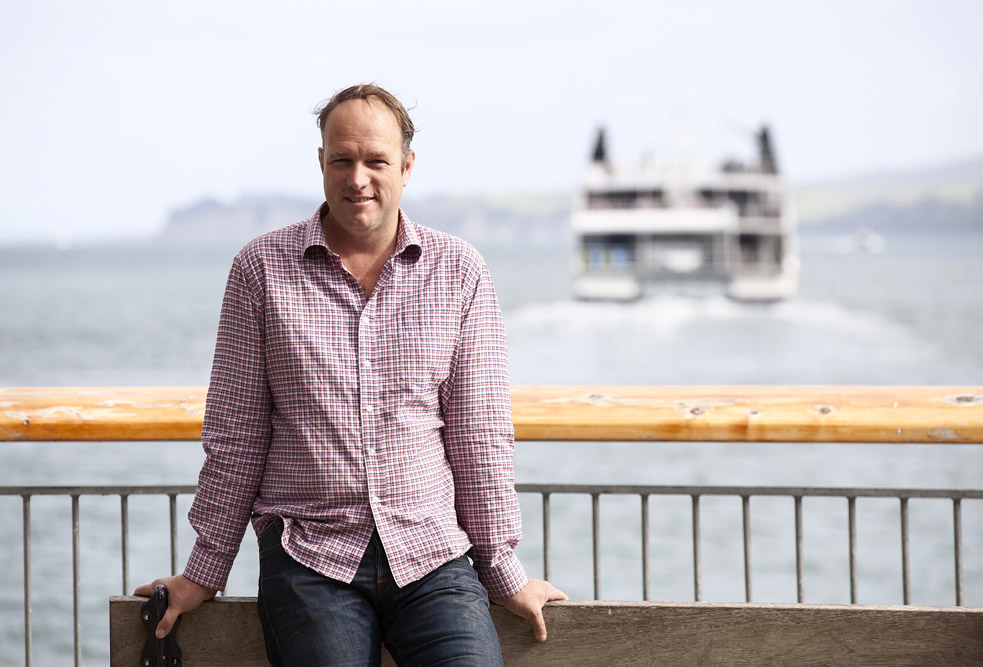
In the days following the announce-ment of Explore’s demise on the Waiheke run, its managing director, William Goodfellow, fronts a public meeting of about 100 islanders. He is given a standing ovation. The meeting was called to see if there was a way to somehow “save Explore”, even if it meant buying their boats.
Goodfellow is touched by the gesture but, as if in answer to the two grumpy women behind me in the queue, he insists there is nothing anyone can do.
Explore doesn’t need saving, of course. It has other tourism operations, including the America’s Cup match-racing boats in Auckland and Sydney, and ferry services in the Bay of Islands and Sydney. Recently, it bought the tourism operations at Hamilton Island in the Whitsunday Islands. And when it pulled the pin on its Waiheke service about the same time, it simply went back to its perhaps less complicated core business of pure tourism.
Goodfellow explains the infrastructure, bus and SuperGold Card issues to the crowd. But, he acknowledges, not enough commuters made the switch to Explore. That was the rub, in the end.
Later, he tells me the company had no option but to take on the existing market conditions. The inadequate facilities a competitor to Fullers is forced to endure will never be changed until there is a competitor needing them changed. Explore did its homework and funded the venture appropriately but in the end, the facilities didn’t change and the passenger numbers weren’t enough, he says. He’s clear it was process, not politics, behind the failure. “AT wasn’t deliberately making it hard for us.”
The Waiheke ferry solution is to make sure the infrastructure is truly a level playing field or regulate the run, he says. He doesn’t have a fixed view on which and would like to see both examined.
Will Explore try again next summer? He’s unequivocal — two of the three boats are on the market, Fullers intends to run half-hourly boats every summer and he doesn’t want to raise false hopes among the Explore staff, of whom about 50 have lost their jobs.
Fullers chief executive Doug Hudson is aware of the emotion released by the failure of the Explore challenge and the clamour for competition, which goes back decades. He says, quite sympathetically, that Explore must be very disappointed. “They gave it a really good go.”
Hudson says Fullers’ response won’t be to hike prices, despite the escalating fears locally. Increases tend to be linked to rises in fuel costs, he says, and fuel’s been reasonably low for the past couple of years.
“We have no current plans to change our pricing.” He adds a caveat, though — if fuel goes up, that might change.
Neither Hudson nor Goodfellow puts much emphasis on Fullers’ new “summer timetable” as the decisive factor. They both acknowledge that these days the ferry business is, in fact, about frequency first and then reliability. Price comes later. Hudson says Fullers is buying new buses for the island. Along with two new boats, much like its latest, purpose-built power-cat Te Kotuku, that will be a $27 million investment in the Waiheke market. Goodfellow tells me Fullers is taking on about 20 of Explore’s now-redundant but “exceptional” staff. It’s all rather matter-of-fact.
Goodfellow is clearly proud of his company, though, and believes it raised the standard of service on the run with its ethos of hospitality.
Explore also helped keep prices stable. Despite Hudson’s assurances, Mike Lee, like others, points out there is no restraint on Fullers bumping up its fares if it wants to. It’s a concern that Waiheke Local Board chair Paul Walden shares. He says it is pretty clear the competition hurt Fullers and it’s likely they will want to recoup those losses at some point.
Walden isn’t in favour of a local-government subsidy for the Waiheke run. That’s not to say it shouldn’t be regulated in some way, but a subsidy that cut fares significantly would see the island over-run and destroy what it’s known for. “We don’t want to become just another suburb [of Auckland],” he says. “We can’t just endlessly pump people to this little island.”
AT needs to proactively encourage competition, he says.
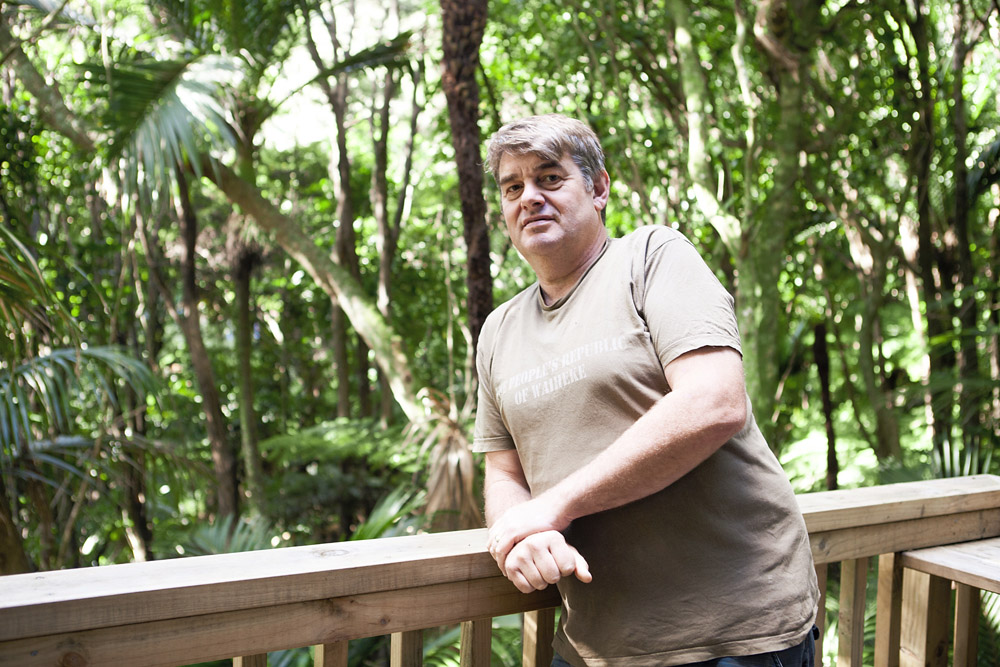
Former commuter Charles Graves, who owns boutique visitor accommodation at Onetangi and promoted Explore to his guests, says the loss is a big step backwards. “I don’t think Auckland Transport were prepared for a second operator. In order for a competitor to come in, those elements need to be changed first. On a cold wintry day, are you going to go and sit out in the open on Pier 3? Or are you going to go to Pier 2?”
If Explore had managed to fill its boats, it would be here today. The fact was, says Graves, the public didn’t know where they were.
Explore made Fullers to step up its service and Graves hopes that won’t slip. The island is now on the world stage and its visitors expect world-class service. But he, too, expects prices to leap. “I’ll put my hand up and say I reckon it won’t be long before it’s a $400-a-month [commute].” Currently a monthly pass is $325.
Waiheke Islander Andrew Barnes, vineyard owner, businessman and founder of Perpetual Guardian, doesn’t buy Explore’s defence of its somewhat sudden entry to the market.
“Frankly, I would have locked things down before the start.” A competitive environment has little to do with ferries out on the water, he says, and everything to do with wharf facilities.Barnes suggests that when the behaviour of Sir Brian Souter — an “aggressive and astute businessman” — and his UK companies is studied, it’s obvious his tactics include flooding out the competition. Barnes believes that without full competition — tickets for all companies being sold at the same booth, for example — the Waiheke Island run will never work. He is insistent the government’s exclusion of the route from the Public Transport Operating Model must end.
It’s 9pm on Sunday, May 8. Explore’s final sailing is due at Matiatia shortly. A crowd of 50 or so has gathered on the wharf. As the ferry approaches stern-first, passengers and Explore staff, in bow ties and celebratory mood, emerge onto the aft deck. Spontaneous applause breaks out on the wharf. Those on board reply in kind. People start to cheer. There’s been a drink or two, lots of laughs, and yes, even a few tears. A brief party at the gangplank follows, as the Explore staff members chat with their supporters. The final trip has been something of a hoot, it appears.
The boat pulls away and people wave and then start to sing, firstly “You Are My Sunshine” and then, as a finale, “We’ll Meet Again”. The boat slides into the dark, becomes a cluster of receding lights, and silence falls at Matiatia. A small girl hugs her mum’s legs, crying a little.
The next morning, reality hits. One ferry company again. Everyone’s back on Fullers. The boats are very full and within days there have been incidents of people — including the regular Friday afternoon swimming kids heading to their lessons at the Teps — being left on the wharf because the ferry was too small.
On the back deck, a waft of sewage from the holding tanks reaches me. Eau de Fullers, some wag named it years ago.
There’s a storm on island social media, including a picture of the deflated-looking children. Some people defend Fullers, urging others to get real — if the boat’s full, it’s full. A Fullers staff member, who lives locally, posts a touching and humble apology. Many posters, though, are happy to attack Fullers for years of allegedly anti-competitive behaviour. Others are very concerned at the level of abuse Fullers staff, quite a few of whom are islanders, are receiving over it all. Someone starts a petition demanding that Fullers be, well, more like Explore. Hundreds sign it.
On the back deck of Superflyte, a disgusting waft of sewage from the holding tanks reaches me. Eau de Fullers, some wag named it years ago. I look behind. There are no friendly yellow rubber ducks chasing us.
We’re all alone out here.

